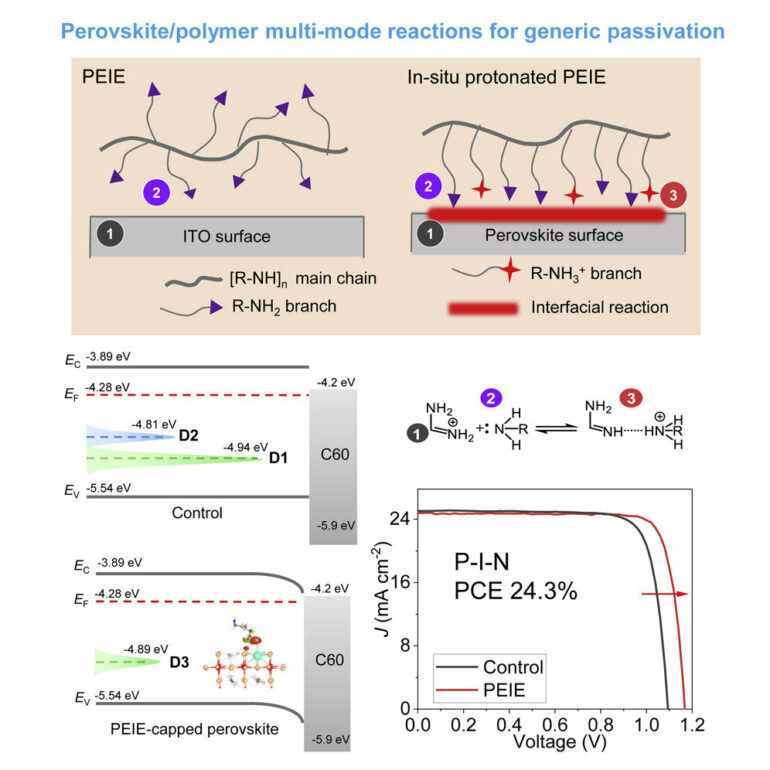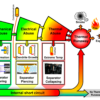As a promising photovoltaic material, metal halide perovskite yields high efficiency in solar cells. However, the deep-level traps of minority carriers at the surface of the p-i-n perovskite solar cells can suppress nonradiative recombination. The precise passivation of deep-level traps has been a major focus in raising the power conversion efficiency (PCE) to the theoretical Shockley-Queisser limit.
Recently, a research group led by Prof. Xu Jixian and Prof. Wu Xiaojun from the University of Science and Technology of China (USTC) of the Chinese Academy of Sciences (CAS), and their collaborators from Suzhou Institute of Nano-Tech and Nano-Bionics of CAS revealed the perovskite/polymer multi-mode interactions and their correlation with the passivation of the deep-level traps, and discovered a new in-situ protonation process that significantly reduces the deep-level traps of minority carriers. This work was published in Joule.
Previously known interaction modes at the perovskite/polyethyleneimine (PEI) interface include conventional physisorption and metal-chelation, which either shows minor passivation effects or tends to passivate the majority carrier traps. To overcome these problems, the researchers used high-sensitivity X-ray photoelectron spectroscopy (XPS) and sum-frequency-generation spectroscopy to identify in-situ protonation process of the amine group at the perovskite/PEI surface.
They studied the correlations between different interaction modes and traps by combining deep-level transient spectroscopy (DLTS) and density functional theory (DFT). The results showed that the in-situ protonation can effectively passivate deep-level traps of minority carriers in perovskite, while conventional ex-situ protonation can’t.
The researchers also compared the passivation effect and the volt-ampere characteristics of PEI with different configurations such as linear, branched and ethoxylated PEIs, and revealed the synergistic effect of the functional group and configurations. They suggested that besides the regular thinking of improving the applicability of passivation by increasing the types of functional groups, the multi-mode passivation of a single functional group should also be considered.
Additionally, the researchers used the passivation strategy in p-i-n perovskite solar cells of different band gaps, all of which showed significant improvement in PCE.
The perovskite/polymer multi-mode interactions revealed in this work provide a possible way for developing a universal passivation strategy and improving power conversion efficiency in the future.
More information:
Zhengjie Zhu et al, Correlating the perovskite/polymer multi-mode reactions with deep-level traps in perovskite solar cells, Joule (2022). DOI: 10.1016/j.joule.2022.10.007
Provided by
Chinese Academy of Sciences
Citation:
Researchers unveil multi-mode reactions in perovskite solar cells (2022, November 25)



